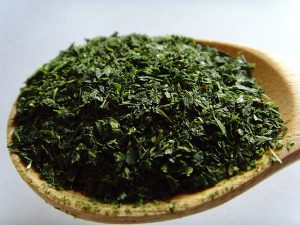 Konacha (粉茶, powder tea) is made up of small bits of leaves, which are filtered out during the processing of gyokuro and sencha.
Konacha (粉茶, powder tea) is made up of small bits of leaves, which are filtered out during the processing of gyokuro and sencha.
Although it translates literally as “powder tea”, konacha isn’t really powdered like matcha or funmatsucha.
Brewed konacha has an intense green color and a strong taste.
Green tea’s components are quickly dissolved in water because of the tiny pieces, hence the brewing time should be short to avoid a taste that’s too strong.
Also, the number of infusions is low, expect no more than two infusions with konacha.
Is konacha any good?
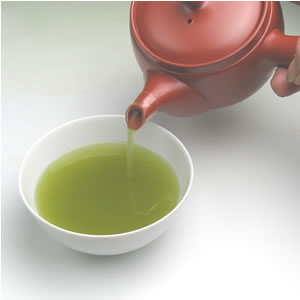 This tea is economical because the leaves are all broken down into small pieces. They are essentially leftovers.
This tea is economical because the leaves are all broken down into small pieces. They are essentially leftovers.
However, the pieces often come from good-quality tea leaves, provided that they come from gyokuro or sencha.
What this means is that the chemical components are the same as in more expensive teas, so health-wise it’s not inferior at all.
If you like teas with delicate flavor, then konacha is probably not for you. As its dark color suggests, it has high astringency and bitterness.
But did you know that you can still drink konacha without the bitter flavor?
Houjikonacha
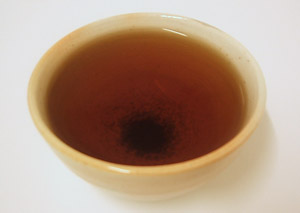 Although not so common, konacha can also be roasted into Houjikonacha (ほうじ粉茶, roasted powder tea).
Although not so common, konacha can also be roasted into Houjikonacha (ほうじ粉茶, roasted powder tea).
That way the bitterness is diminished and the tea acquires a roasted flavor and aroma. It is also used as an ingredient in a Japanese dish: chagayu.
How to brew konacha:
Brewing konacha is easy. Use a teaspoon (4 gr) of konacha per person and put into your kyusu (Japanese teapot).
Then heat 120 ml (4 oz) of boiling water per person and pour directly into your kyusu.
Wait for no more than 30 seconds and serve into each cup.




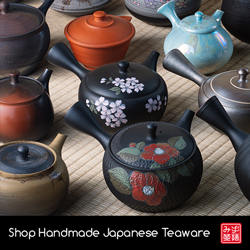
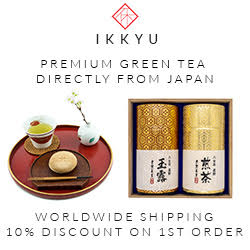
March 23, 2018
It is my understanding that one of the good things about konacha is that the active ingredients (which are normally insoluble) become concentrated in this tea – good from a health perspective.
March 23, 2018
Hi Bronwen
Yes, it’s pretty much the same thing that happens with powdered green teas such as matcha.
November 6, 2018
Hi have you already published a post about Houjikonacha? I’m so keen to know more about it as I find information about it on the web lacking.
November 6, 2018
Hi Karen
It’s not a very common tea. I think that powdered houjicha might be easier to find, because it’s used in cooking just like matcha.
The post related to houjikonacha is https://www.myjapanesegreentea.com/chagayu , I’ll update the link in this post. Thank you.
February 11, 2019
Is Konacha suitable for multiple infusions?
February 11, 2019
Hi Mark
This tea dissolves quickly, so that in the first infusion you get most of the flavor out. Of course, you can still infuse it another time, and more times if you feel like it, but it’s not as enjoyable in terms of flavor as a sencha.
Basically, multiple infusions are a personal thing, there’s not a strict rule about it, only guidelines. I wouldn’t bother re-infusing konacha a third time, but that’s just me.
April 4, 2019
I just bought a 2.2 bag of Kona cha Ume Green tea powder from the owner of my favorite sushi bar . I am trying to research and find out how much caffeine it has? I was hoping that it does have caffeine ,if you could help I would appreciate it.
April 5, 2019
Hi Ashley
It does have caffeine. The exact amount depends on the quality of the konacha itself, if it’s made with younger, higher quality leaves it would have more caffeine than older leaves.
We could be talking of about 30 mg of caffeine in a cup of konacha.
August 27, 2020
I really enjoyed the flavor. I think it’s a matter of personal taste. I really like hearty tea. So, for me, this was delicious. I didn’t get much of any bitterness or astringency, but I brewed each cup for only a very short time and used less tea than I’d use if I were making sencha. I get that this is deemed a byproduct of the tea industry — basically some “throwaway” that has been repurposed as a cheap tea. But, I actually found it very fortifying. It had almost a grainy flavor and a lot more depth than other teas (likely because of the mixing of pieces/dust from different varieties of tea). It surprised me how dark it got, and so quickly. I looked down in horror at this dark sludge after brewing the first cup. But, it actually tasted really good. Again, I brewed it for a very, very short time. I basically just dipped the tea in the water, and I kept the water at 80ºC. I’d recommend it to anyone who likes teas like fukamushi. I’d actually say that this is closer to fukamushi than matcha. Though it does have a lot of sediment in it, matcha is much sweeter and imparts a lighter feeling. This is hearty and heavy like a meal and more vegetal/grainy, so it’s closer to fukamushi in that respect.
August 27, 2020
Hi Whiskey, thank you for your comment.
I think that one important thing in tea is that you drink what you like. For example I used to drink a lot of genmaicha at first because I enjoyed it more than higher grade teas.
As you say, it’s a matter of personal taste. Konacha is still much better than what you get in a normal green teabag.
August 27, 2020
That’s a really good point, Ricardo. I didn’t think of it that way. It’s good to put it into perspective (your comparison to using a tea bag). Thank you. 🙂